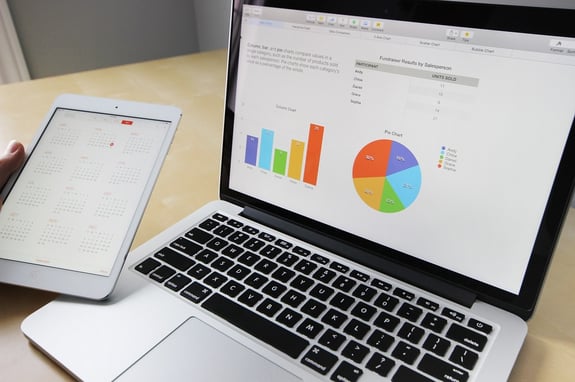 Kevin Benson, Director of Application Development
Kevin Benson, Director of Application Development
Many small and medium-sized businesses still primarily use spreadsheets to track KPIs and report on complex metrics. If all this data lives in spreadsheets, it can be troublesome to update, share, and visualize. However, many businesses settle for spreadsheets—as the idea of real-time management metrics remains a fantasy and something that only bigger businesses can pull off.
A tool such as Microsoft’s Power BI gives businesses data visualization capabilities that were previously out of reach. Integrating well with Office 365, Power BI allows organizations to pull from existing data sources to create reports, visualizations, and dashboards that give you a quicker way to assess the state of your business. Such data can help improve your business performance, more quickly uncover areas needing improvement, and better align KPIs with your strategic direction.
To take advantage of this tool, we see three important steps in this process.
1. Review (and possibly reassess) your KPIs.
We’ve written in more detail about KPIs in the past, but Power BI gives you a good opportunity to review your current KPIs to see how well they’re working. So that your report doesn’t devolve into a lot of static and noise, it helps to prioritize about five of your most important KPIs to give you an effective snapshot of your business. The rest of your data is important too, but it can be provided in a supportive way so that it doesn’t distract from keeping a constant eye on your most important goals.
2. Identify real time sources of information that measure your KPIs.
If you’re like many businesses, your staff may spend more time compiling data than analyzing it. Databases, finance reports, employee and customer surveys, CRMs, ERPs, time tracking tools, Google Analytics, third-party applications, and, yes, spreadsheets might all serve as sources of information that generate your most important KPIs. The challenge now is to extract real time KPIs from your existing systems so that they can be fed into Power BI.
However, by the time many businesses compile metrics from all these data sources, they’re often not current anymore. You might need to reassess how you currently gather and store real time data. Is it a mess? Unstructured? Too manual? Or is it structured, clean, and automated (as much as possible)?
Even if the data is well-maintained, you may have storage issues where it’s spread across different servers and applications, making it decentralized and hard to access. Ideally, you should get to a place where important business data is centralized or at least pooled into a centralized location for easy access.
3. Develop real-time reports and dashboards.
Now the real fun begins where you can ditch your spreadsheets and instead create data visualizations that are much more compelling. We’ve written a more detailed post about data visualization to give you some tips and tricks, but the key is to keep visuals simple, transparent, unified, and actionable. Otherwise, you will be inundated with data that gives you analysis paralysis, and too much data can lead to indecision rather than decision.
Many businesses have stumbled when attempting this type of reporting. They clearly believe in its value, but it can feel like too much work to get off the ground. Power BI’s main advantage is its reports and dashboards. The tool provides you with a single place to track all your KPIs in an easily understandable chart or graph.
Hundreds of data visualization options exist, allowing you to customize the right report for your business. And when you set up real time data feeds between your information sources and Power BI, then the tool becomes something you can check on an ongoing basis (instead of creating a new report from scratch each time you review the data).
While Power BI can be easy to use, a technology partner can help get you up and running more quickly by assessing your current data, developing your initial reports, and providing ongoing technical support.
If you’d like to have a discussion about how Power BI can improve your business reporting, then reach out to us through the form below.


